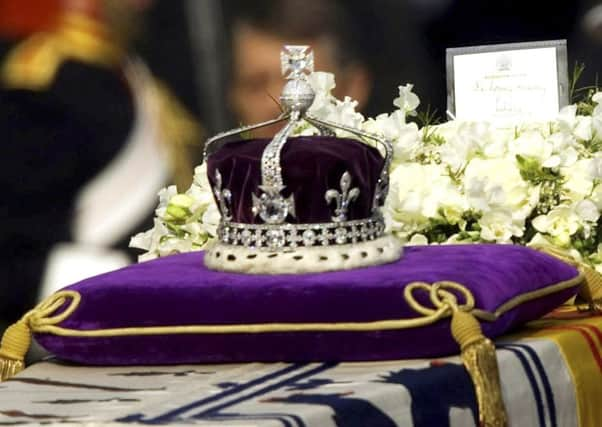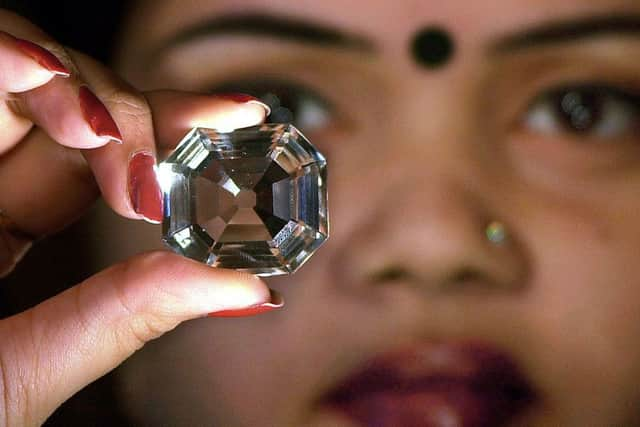India in U-turn over return of Koh-i-Noor diamond from UK


The country’s solicitor general had told the supreme court that Britain should not have to give the diamond back, since it was given freely in the mid-19th century by the family of Punjab’s Maharaja Ranjit Singh and had been “neither stolen nor forcibly taken by British rulers”.
That statement was surprising after decades of demanding the diamond be returned. For many Indians, the loss of the Koh-i-Noor is symbolic of India’s subjugation under British colonial rule and its return is viewed as partial compensation for centuries of economic exploitation.
Advertisement
Hide AdAdvertisement
Hide AdBut on Tuesday night, the Culture Ministry issued a statement saying it had yet to make its position known and that India’s government would make all possible efforts to bring back the diamond.


The court was hearing a petition filed by a rights group asking it to order the government to seek the return of the diamond.
The two-judge bench said on Monday that it did not want to issue a ruling that might jeopardise a future attempt to bring back the diamond or other treasures that once belonged to India. It told the government to take six weeks to reconsider its position before the court decides whether to dismiss the petition.
The diamond is part of the Crown Jewels on display in the Tower of London, set in front of the Queen Mother’s crown.


The Koh-i-Noor, which means Mountain of Light, was discovered in the Golconda mines in what is now the southern Indian state of Andhra Pradesh. The large, colourless diamond then passed between Mughal princes, Iranian warriors, Afghan rulers and Punjabi Maharajas before it was given in 1849 to the East India Company, which offered it to Queen Victoria.
India, along with Pakistan and Afghanistan, have long squabbled over who has the rightful claim to the diamond.
During a 2010 visit to India, Prime Minister David Cameron told local media that the diamond would stay in Britain.
Advertisement
Hide AdAdvertisement
Hide Ad“If you say yes to one (request), you suddenly find the British Museum would be empty,” Mr Cameron said.
“I’m afraid it’s going to have to stay put.”